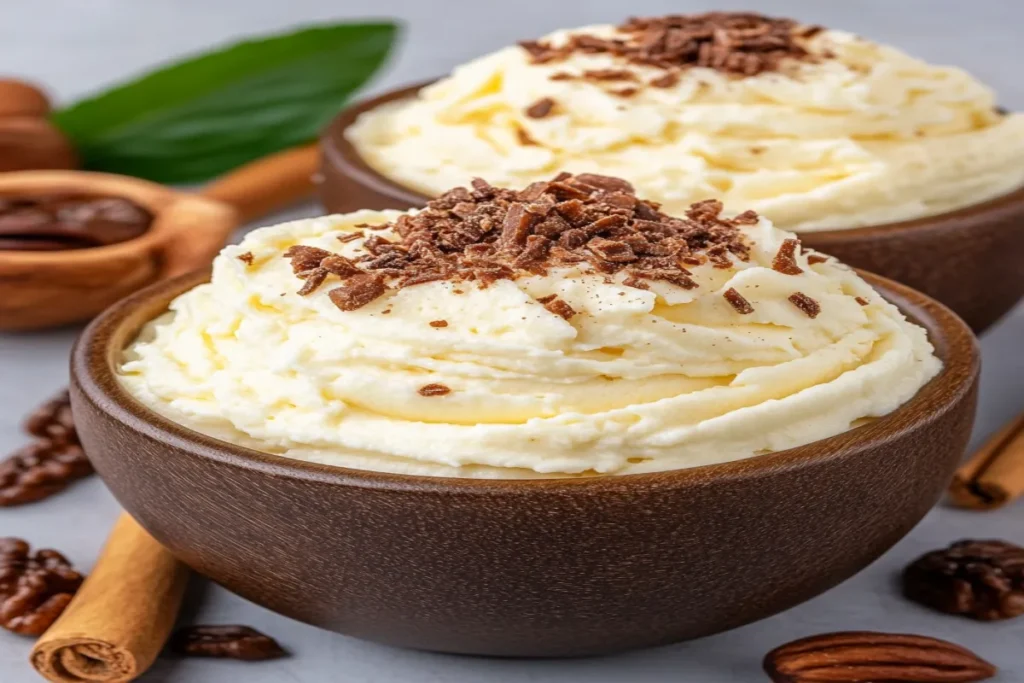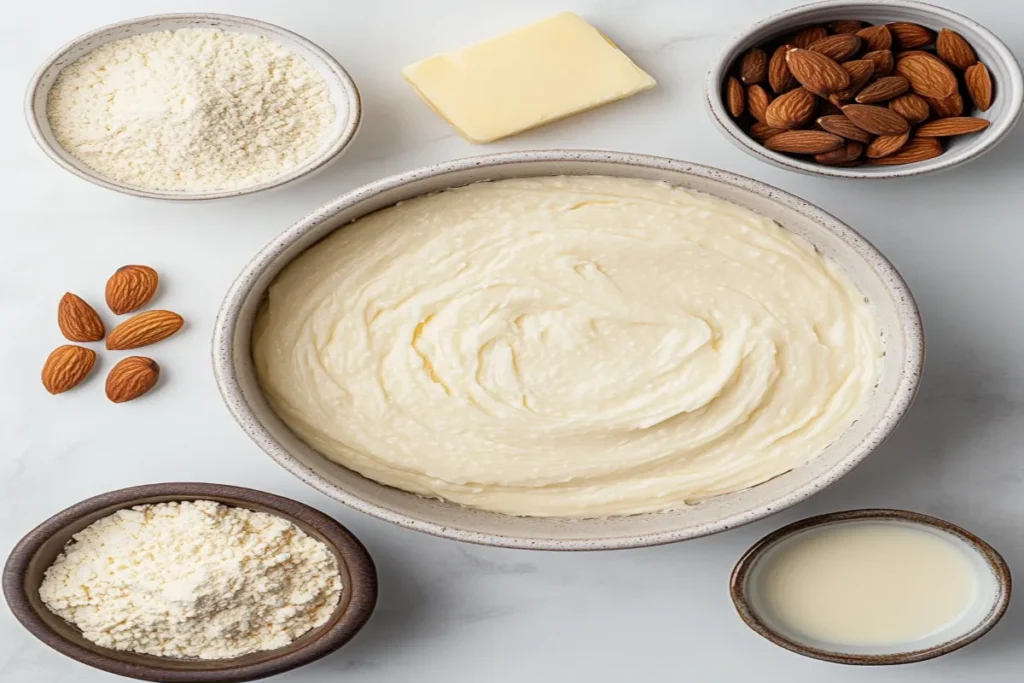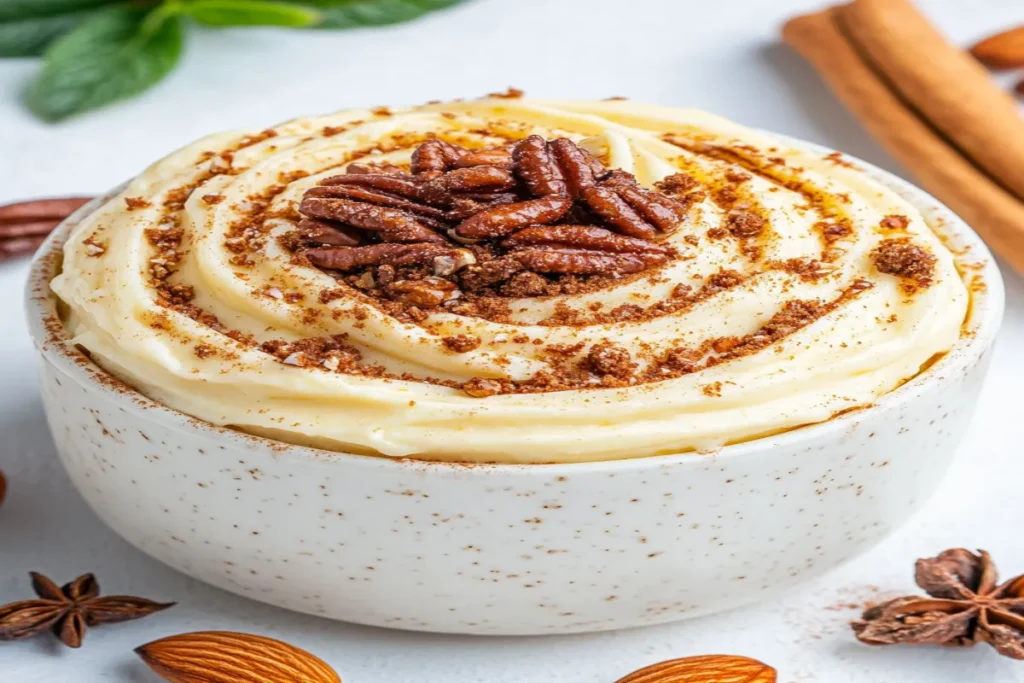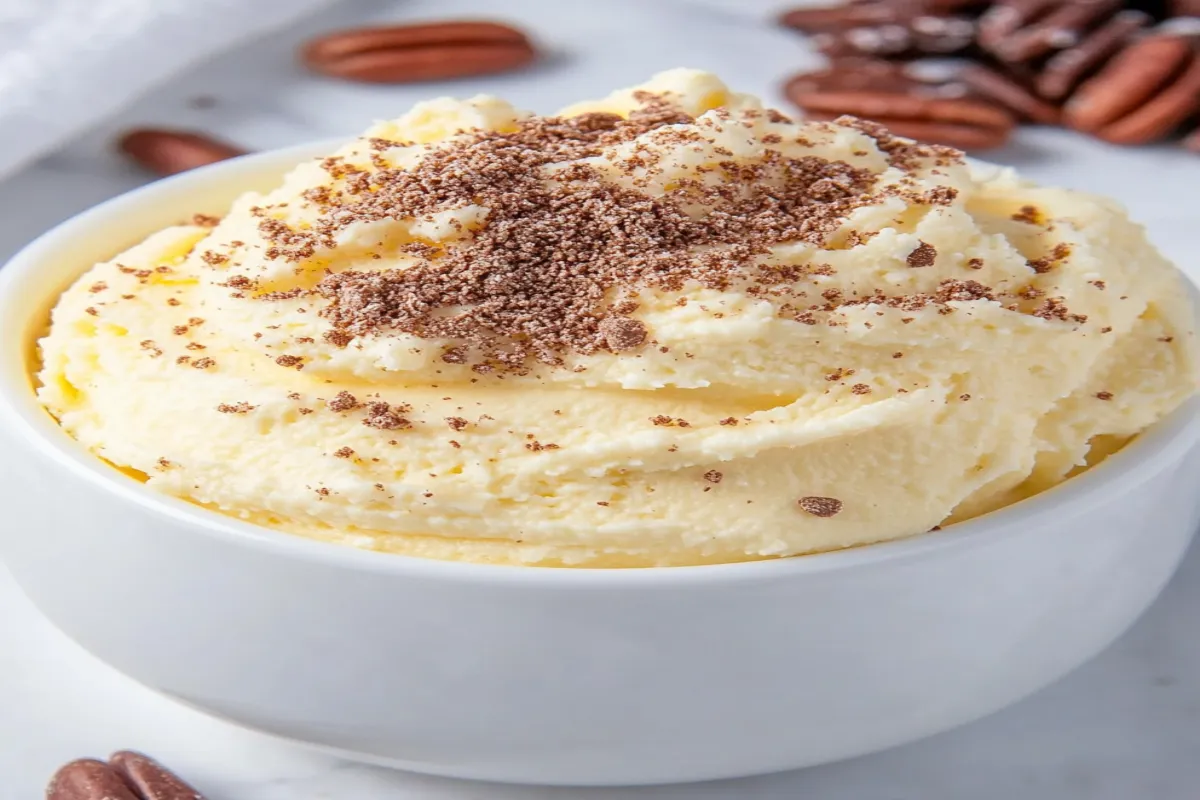Vanilla Butter and Nut Flavoring: A Kitchen Essential
Vanilla butter and nut flavoring is a cherished ingredient known for its rich, inviting aroma and complex taste. This unique blend combines the warmth of vanilla, the creamy richness of butter, and subtle nutty undertones, making it a staple in both baking and cooking. But what sets it apart?
One of its greatest strengths is its versatility. Whether you’re whipping up a batch of cookies, baking a classic cake, or experimenting with a new dessert, this flavoring enhances any recipe with its deep and comforting notes. It also serves as an excellent alternative to vanilla extract, especially in dishes that call for a more robust flavor.
In this guide, we’ll explore everything you need to know about vanilla butter and nut flavoring—its history, types, uses, benefits, and more. By the end, you’ll have a thorough understanding of how to incorporate this delightful ingredient into your culinary creations.
The Origins and Evolution of Vanilla Butter and Nut Flavoring
A Flavor with a Story
Vanilla butter and nut flavoring has a history that stretches back decades. Originally developed to mimic the distinctive taste of butternut—a flavor deeply rooted in Southern baking—it quickly gained popularity for its rich, well-balanced profile. Combining creamy butter, sweet vanilla, and a touch of nuttiness, this flavoring became a staple in home kitchens and bakeries alike.
Traditionally used in Southern desserts such as butter nut cake, it has stood the test of time despite the rise of new extracts and flavor blends. Today, it continues to be a favorite among bakers and chefs, offering a timeless and distinctive flavor that elevates both classic and contemporary recipes.
A Modern Favorite
With the resurgence of home baking and an increasing demand for unique flavors, vanilla butter and nut flavoring has seen a renewed interest. Whether used in traditional comfort foods or innovative new dishes, this flavoring remains a beloved choice in kitchens around the world.
Types and Varieties of Vanilla Butter and Nut Flavoring
Artificial vs. Natural Flavoring
- Artificial Flavoring: Created using synthetic compounds to replicate natural flavors, artificial versions tend to be more affordable and have a longer shelf life. However, some prefer to avoid artificial additives in their cooking.
- Natural Flavoring: Derived from real vanilla beans, butter extracts, and nuts, natural flavorings provide a richer, more authentic taste. Though they may be pricier and have a shorter shelf life, they are often preferred for their purity and depth of flavor.
Liquid vs. Powdered Form
- Liquid Flavoring: The most common form, liquid vanilla butter and nut flavoring blends seamlessly into batters, doughs, and beverages.
- Powdered Flavoring: While less widely used, powdered versions are excellent for dry mixes and recipes where added liquid might alter the texture. They’re also great for dusting over desserts as a finishing touch.
Organic vs. Non-Organic Options
- Organic Flavoring: Made from organically grown ingredients without synthetic pesticides or fertilizers, organic options offer a more natural and environmentally friendly choice.
- Non-Organic Flavoring: More budget-friendly and widely available, non-organic varieties still deliver excellent flavor but may include synthetic components.
Popular Brands and Products
Several brands have built a reputation for producing high-quality vanilla butter and nut flavoring. Here are some notable options:
- Superior Flavors – Known for its well-balanced blend, this brand is a favorite among home bakers and professional chefs alike.
- Bickford Flavors – Offers a water-soluble version that works well in recipes requiring a water-based extract.
- Nature’s Flavors – Provides an organic vanilla butter and nut flavor extract for those seeking a natural, environmentally friendly alternative.
Each of these brands brings something unique to the table, catering to different preferences and culinary needs.

How to Use Vanilla Butter and Nut Flavoring
Baking Applications
Vanilla butter and nut flavoring shines in a variety of baked goods, adding depth and complexity to classic recipes:
- Cakes – Enhances the flavor of butter cakes, pound cakes, and sponge cakes.
- Cookies – A great way to elevate sugar cookies, shortbread, and chocolate chip cookies.
- Pastries – Works beautifully in croissants, danishes, and eclairs.
- Sweet Breads – Brings extra richness to banana bread, zucchini bread, and cornbread.
Beverage Enhancements
This flavoring isn’t just for baking—it’s also a fantastic addition to beverages:
- Coffee – Adds a gourmet touch to your morning cup.
- Smoothies – Blends well with fruit and dairy for a richer taste.
- Hot Chocolate – Infuses warmth and complexity into a classic comfort drink.
Dessert Creations
For a unique twist on traditional desserts, try incorporating this flavoring into:
- Ice Cream – Creates a creamy, nutty depth in homemade ice cream.
- Puddings & Custards – Enhances classic vanilla or butterscotch pudding.
- Sorbets – Pairs well with fruit-based sorbets for added richness.
Non-Culinary Uses
Vanilla butter and nut flavoring also has applications beyond the kitchen:
- Candles & Soaps – Used in homemade products for a warm, inviting aroma.
- Aromatherapy – Can be added to essential oil blends or diffusers for a comforting scent.
Benefits and Considerations
Why Use Vanilla Butter and Nut Flavoring?
- Enhances Flavor – Combines sweet, creamy, and nutty notes to enrich a wide range of dishes.
- Highly Versatile – Works in both sweet and savory recipes, as well as non-culinary applications.
- Natural Health Benefits – When using natural extracts, you benefit from the antioxidants and nutrients found in real vanilla beans and nuts.
Things to Keep in Mind
- Allergens – Some versions contain nut extracts, so check labels if allergies are a concern.
- Dietary Restrictions – If cooking for vegans or those with dairy sensitivities, ensure the flavoring is free from animal products.
- Storage & Shelf Life – Store in a cool, dark place to maintain its potency and freshness.
How to Make Vanilla Butter and Nut Flavoring at Home
Making your own vanilla butter and nut flavoring is simple and allows you to control the quality of ingredients. Here’s a basic DIY recipe:
Ingredients:
- 1 cup pure vanilla extract
- ½ cup unsalted butter, melted and cooled
- 1 tbsp almond extract (or another nut extract of choice)
Instructions:
- In a clean glass bottle, combine vanilla extract, melted butter, and almond extract.
- Shake well to blend the ingredients thoroughly.
- Store in a cool, dark place for at least 24 hours before using to allow the flavors to meld.
- Shake before each use and enjoy in your favorite recipes!
Final Thoughts
Vanilla butter and nut flavoring is a powerhouse ingredient that enhances countless recipes with its rich and balanced taste. Whether you’re baking, cooking, or even crafting, this versatile flavoring can take your creations to the next level. By understanding its history, varieties, and applications, you can make the most of this beloved ingredient in your kitchen.
Stay tuned as we explore even more ways to use this delightful flavoring in upcoming recipes and creative culinary ideas!
Basic Vanilla Butter and Nut Flavoring
Ingredients:
- 1 cup of vodka or glycerin (for a non-alcoholic version)
- 3 vanilla beans
- 1/4 cup unsalted butter, melted
- 1/4 cup almonds, finely chopped
Instructions:
- Prepare the Vanilla Beans: Slice the vanilla beans lengthwise to expose the seeds inside.
- Combine Ingredients: In a clean jar, combine the vodka or glycerin, melted butter, and finely chopped almonds.
- Add Vanilla Beans: Place the sliced vanilla beans into the jar with the other ingredients.
- Seal and Store: Seal the jar tightly and shake well. Store it in a cool, dark place.
- Infuse the Flavors: Let the mixture sit for at least 4 weeks, shaking the jar occasionally to help the flavors meld. The longer it sits, the stronger the flavor will be.
- Strain and Use: After the infusion period, strain the liquid to remove the solids. Your homemade vanilla butter and nut flavoring is now ready to use.
Quick Vanilla Butter and Nut Flavoring
Ingredients:
- 1 cup of water
- 1 cup of granulated sugar
- 1 teaspoon vanilla extract
- 1 teaspoon butter extract
- 1 teaspoon almond extract
Instructions:
- Make a Simple Syrup: In a saucepan, combine the water and sugar. Heat over medium heat, stirring until the sugar is completely dissolved.
- Add Extracts: Remove the syrup from heat and stir in the vanilla, butter, and almond extracts.
- Cool and Store: Allow the mixture to cool to room temperature. Pour it into a clean jar or bottle and store it in the refrigerator.
- Use as Needed: This quick version can be used immediately and works well in baking and beverages.
Tips for Best Results
To ensure your homemade vanilla butter and nut flavoring is as flavorful and effective as possible, consider these tips:

Quality of Ingredients
- Use High-Quality Vanilla Beans: The better the quality of the vanilla beans, the richer and more complex your flavoring will be. Look for plump, fragrant beans.
- Fresh Butter and Nuts: Ensure your butter is fresh and your almonds are finely chopped to release the maximum amount of flavor.
Proper Storage Methods
- Cool, Dark Place: Store your flavoring in a cool, dark place to prevent it from losing potency. Light and heat can degrade the flavor over time.
- Airtight Containers: Use airtight containers to keep out moisture and contaminants, which can spoil your flavoring.
Frequently Asked Questions
When it comes to vanilla butter and nut flavoring, there are often a few common questions that arise. Let’s address some of these FAQs to provide clarity and help you make the most out of this versatile ingredient.
What is the difference between vanilla extract and vanilla butter nut flavoring?
Vanilla extract is made purely from vanilla beans soaked in alcohol or glycerin, providing a straightforward vanilla flavor. In contrast, vanilla butter nut flavoring is a blend that combines the rich, sweet taste of vanilla with the creamy, savory notes of butter and a subtle nuttiness. This blend creates a more complex and robust flavor profile, ideal for enhancing a variety of recipes.
Can I use vanilla butter nut flavoring in place of vanilla extract?
Absolutely! Vanilla butter nut flavoring can be used as a substitute for vanilla extract in most recipes. It will impart a richer, more complex flavor to your dishes. However, be mindful of the intensity and adjust the quantity according to your taste preferences. Generally, you can use a 1:1 substitution ratio, but you might want to start with slightly less and adjust as needed.
Are there any health concerns with artificial flavorings?
Artificial flavorings are generally safe to use and approved by food safety authorities. However, some individuals prefer to avoid them due to potential sensitivities or a desire to consume more natural products. If you have concerns about artificial ingredients, opt for natural or organic vanilla butter and nut flavoring, which is derived from real vanilla beans, butter, and nuts.
How should I store vanilla butter nut flavoring?
Proper storage is crucial to maintaining the flavor and quality of your vanilla butter nut flavoring. Here are some tips:
- Cool, Dark Place: Store the flavoring in a cool, dark place away from direct sunlight and heat.
- Airtight Container: Keep it in an airtight container to prevent exposure to air, which can degrade the flavor over time.
- Refrigeration: If you live in a particularly warm climate, you might consider storing it in the refrigerator to extend its shelf life.
What recipes work best with vanilla butter nut flavoring?
Vanilla butter and nut flavoring is incredibly versatile and works well in a wide range of recipes. Here are a few ideas:
- Baked Goods: Use it in cakes, cookies, and pastries for a rich, enhanced flavor.
- Beverages: Add it to coffee, tea, or smoothies for a delightful twist.
- Desserts: Incorporate it into ice creams, puddings, and custards to elevate their taste.
- Savory Dishes: While less common, it can also add an interesting depth to certain savory dishes, such as sauces or marinades.

Conclusion and Recommendations
Summary of Key Points
Vanilla butter and nut flavoring is a remarkable ingredient that has found its way into the hearts and kitchens of many culinary enthusiasts. Throughout this article, we’ve explored various facets of this unique flavoring, from its history and types to its myriad uses and benefits. Here’s a quick recap of what we’ve covered:
- Introduction: Vanilla butter and nut flavoring combines the sweetness of vanilla, the richness of butter, and the subtlety of nuts, making it a versatile addition to many recipes.
- History: This flavoring has a rich history, originating from traditional Southern baking and evolving into a popular choice for modern cooks and bakers.
- Types and Varieties: Available in artificial and natural forms, as well as liquid and powdered options, there’s a variety for every preference and dietary need.
- Culinary Uses: Its versatility shines in baking, beverages, desserts, and even some savory dishes.
- Non-Culinary Uses: Beyond the kitchen, it can be used in crafting and aromatherapy, adding a pleasant aroma to candles, soaps, and essential oil blends.
- Benefits: This flavoring enhances taste, offers versatility, and, when natural, provides health benefits from its antioxidant properties.
- Considerations: Be mindful of potential allergens, dietary restrictions, and proper storage methods to maintain quality.
- Homemade Recipes: Making your own vanilla butter and nut flavoring at home is simple and allows for customization.
- FAQs: Common questions about substitutions, health concerns, storage, and best uses were addressed to provide clarity.
Final Recommendations
As you embark on your culinary adventures with vanilla butter and nut flavoring, here are some final recommendations to ensure you get the most out of this delightful ingredient:
- Experiment Freely: Don’t be afraid to experiment with different types and brands to find the one that best suits your taste preferences and needs.
- Mind the Quality: Opt for high-quality, natural flavorings whenever possible to enjoy the full depth and benefits of the flavor.
- Storage Tips: Proper storage is key. Keep your flavoring in a cool, dark place, and use airtight containers to maintain its freshness and potency.
- Stay Informed: Always check for potential allergens and dietary restrictions, especially when cooking for others.
